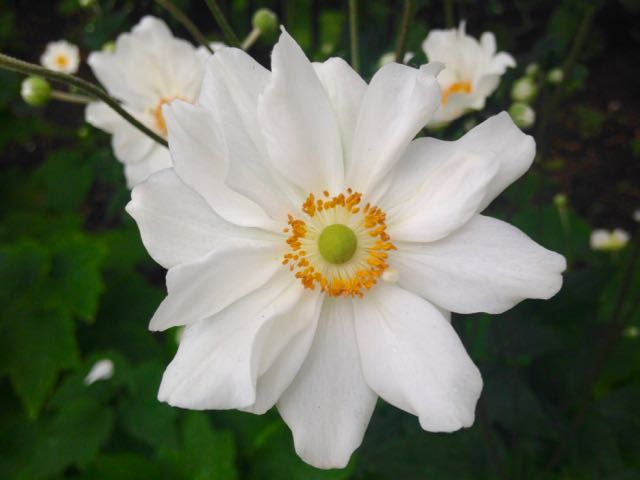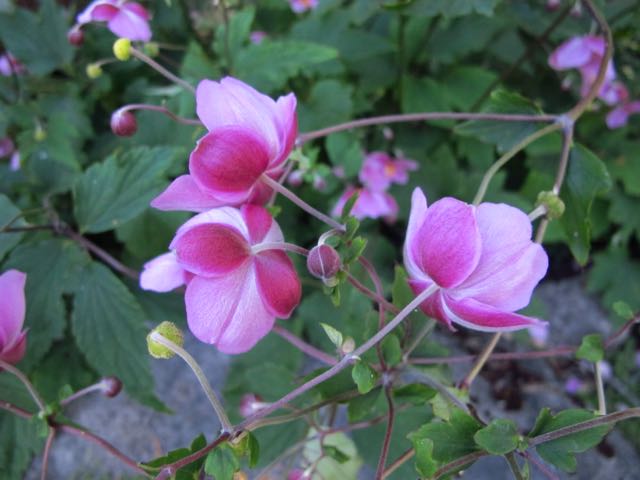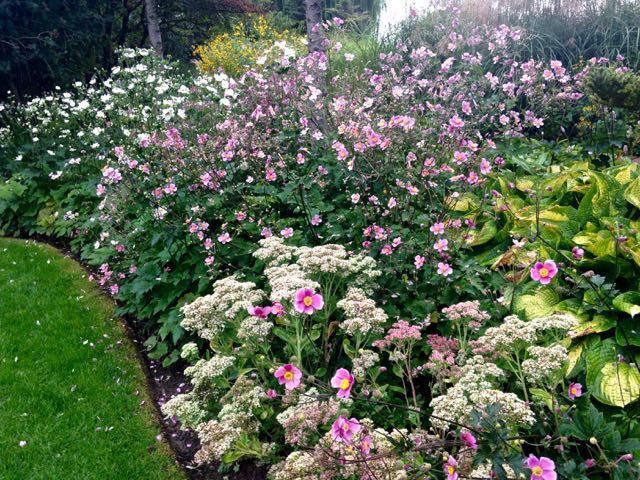Late summer and early fall often belong to the enormous daisy or aster family (Asteraceae or Compositae, for those looking for plant surnames).
But one perhaps underused group of plants can be pretty Wow! at this time of year. They’re in the same family as buttercups or clematis (with another mouthful of a family name, Ranunculaceae). It’s the Japanese anemone.
For how-tos, I’m going to defer to this article by horticulturist John Valleau of Heritage Perennials, who lists it as one of his “brown thumb perennials.” Instead, I’ll focus on the wow, with the images below. Click any image to see them as a slideshow.
Do you grow Japanese anemone? I’ve tried, but my garden isn’t quite sunny (or large) enough for them. You do have to leave some room for them to appear in late summer – which doesn’t happen in the Microgarden, which fills in pretty quickly.
There are now shorter cultivars available in the ‘Lady’ series, and one of the advantages is that the flowers tend to face up rather than out. They’re worth investigating.
Please plant them, so I can get my vicarious joys from your garden.













2 comments
I have 3 varieties of Japanese anemone in southwest corner of my Guelph garden. Right underneath a Himalayan birch. The first two years they really didn’t do much. They were quite small and produced a few (very pretty!) pink blooms. This year they exploded! One of the few things in my garden to thrive in the heat and drought. I may have to divide them in the Spring. Just need to find a spot somewhere else in the garden to tuck them into…
Great, Jennifer! That’s a prime example of the “1st year, Sleep. 2nd year, Creep. 3rd year, Leap!” theory of perennial gardening. I’m picturing your beautiful display under the Himalayan birch (another beautiful plant; love the bark) right now. Ahhhh.